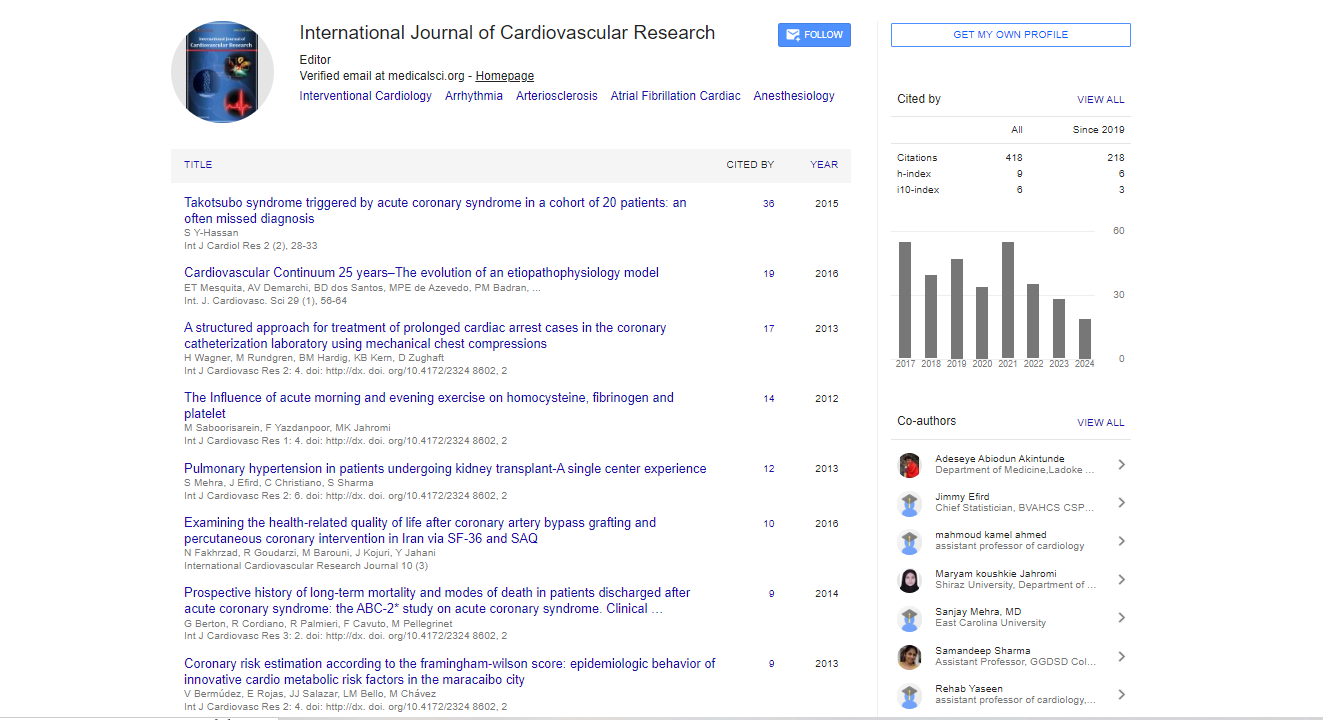Research Article, Int J Cardiovasc Res Vol: 4 Issue: 6
Cardiomyocyte and Adrenoreceptor Modeling with Fluorescence Deconvolution Microscopy to Understand Heart Repair as a Result of Ventricular Unloading: Cell culture to LVAD
| Poindexter BJ1, Frazier OH2 and Bick RJ1* | |
| 1Department of Pathology and Laboratory Medicine, University of Texas Medical School at Houston, Texas, USA | |
| 2Center for Cardiac Support, Cardiovascular Surgery Research, Cullen Cardiovascular Research Laboratories, Texas Heart Institute, Texas, USA | |
| Corresponding author : Roger J Bick Department of Pathology and Laboratory Medicine, MSB 2.288, University of Texas Medical School at Houston, 6431 Fannin Street, Houston, Texas 77030, USA Tel: (+1)-713-500-5406; Fax: (+1)-713-500-0370 E-mail: Roger.J.Bick@uth.tmc.edu |
|
| Received: April 07, 2015 Accepted: July 22, 2015 Published: July 25, 2015 | |
| Citation: Poindexter BJ, Frazier OH, Bick RJ (2015) Cardiomyocyte and Adrenoreceptor Modeling with Fluorescence Deconvolution Microscopy to Understand Heart Repair as a Result of Ventricular Unloading: Cell culture to LVADs. Int J Cardiovasc Res 4:6. doi:10.4172/2324-8602.1000234 |
Abstract
Cardiomyocyte and Adrenoreceptor Modeling with Fluorescence Deconvolution Microscopy to Understand Heart Repair as a Result of Ventricular Unloading: Cell culture to LVAD
Objective: This research describes changes in number, density and localization of adrenoreceptors (ARs) following left ventricular unloading, after earlier reports of a loss of adrenoreceptors in heart failure, as well as cardiomyocyte dedifferentiation, another repair mechanism associated with heart failure, and suggests how these two ‘protective’ mechanisms work together to spare cardiac muscle from damage.
Hypothesis: Receptor down-regulation and number reduction, coupled with a change in location of ARs, is an attempt to preserve myocyte function and integrity by avoiding myocyte calcium overload and irreparable cell damage, and that in the ailing heart the circulation might become a primary source for calcium required for myocardial contraction. Adrenoreceptor compensations, together with cardiomyocyte dedifferentiation, protect the heart and allow for recovery.
Methods: Using fluorescent deconvolution microscopy we visualized ARs in left ventricle tissue samples harvested from left ventricular assist device (LVAD) patients at device implantation, and then at device explantation. 3D models of adrenoreceptors/ myocardium were constructed from acquired images, providing us with a detailed view of receptor locations and giving us a better understanding of adrenoreceptor changes resulting from ventricular unloading. Cell culture studies of dedifferentiating adult cells were also performed, and real time calcium flux images were acquired together with fluorescent labeling of ARs.
Conclusions: ARs in pre-LVAD myocardium were ‘clumped’, but after unloading they were homogeneously redistributed throughout the myocardial muscle fibers, suggesting an improved unloadingdependent, calcium regulation and signaling, and resulting improved cardiac function. This rearrangement might accompany the reintroduction of myocytes into a reparative and protective cycle via dedifferentiation. (251).
 Spanish
Spanish  Chinese
Chinese  Russian
Russian  German
German  French
French  Japanese
Japanese  Portuguese
Portuguese  Hindi
Hindi 



